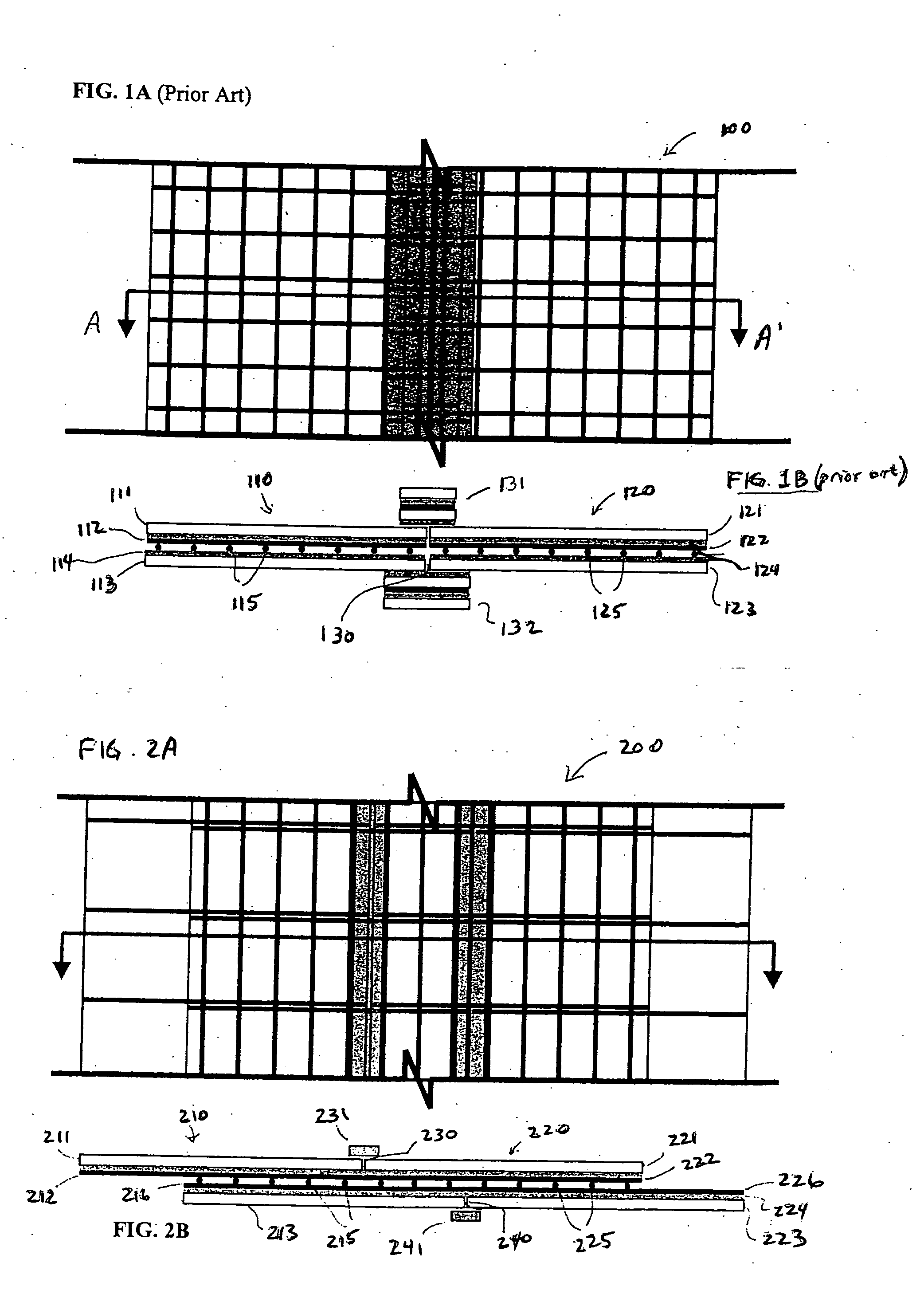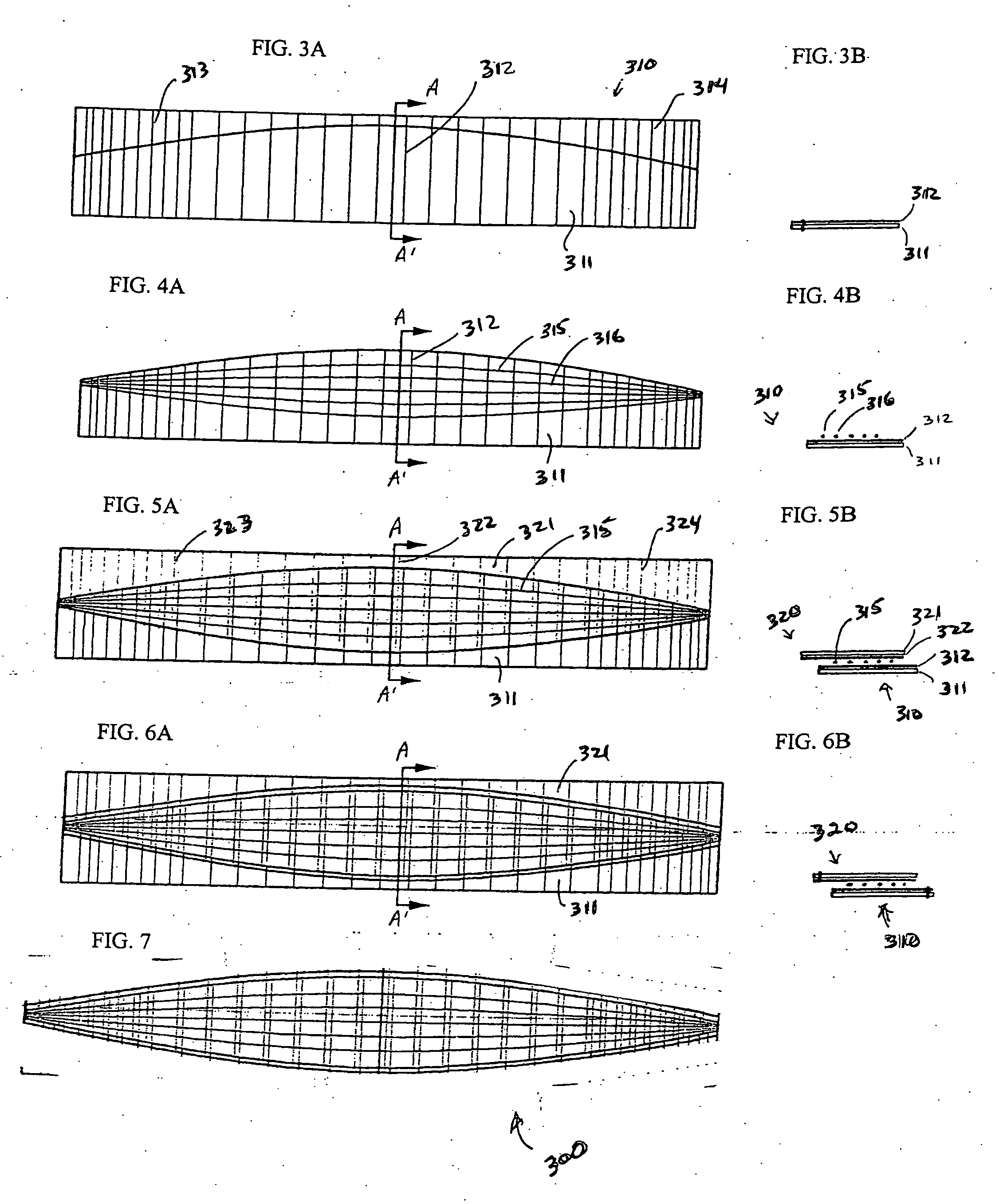Inflatable and deployable systems with three dimensionally reinforced membranes
a three-dimensional reinforcement, inflatable technology, applied in the direction of emergency equipment, transportation and packaging, cosmonautic vehicles, etc., can solve the problems of significant impact on weight and cost, affecting reliability, and cost-effective high-performance applications, so as to reduce the required number of gores and seams, the effect of minimizing seams
- Summary
- Abstract
- Description
- Claims
- Application Information
AI Technical Summary
Benefits of technology
Problems solved by technology
Method used
Image
Examples
case study 1
[0036] In a first space / planetary deployable design scenario, 3DR was considered in comparison to a Mars MABVAP (NASA-JPL's Mars Aerobot Validation Program) style mission. Some of the more significant environmental design conditions taken into account include a wide temperature range (55° C. to −128° C., for tensile property and permeability testing), extended duration as a packed balloon system (for months), and float at expected superpressure levels. A MABVAP base design typically consists of a 12.2μ-12.7μ polyester terepthalate (PET) film constructed with heat activated bi-taped seams of 12.7μ PET tape with 12.7μ of polyester adhesive. For this example the system design consists of a 10 m ø sphere with a float payload of 1.5 Kg, and a deployment payload of 20 Kg. Typical design areal density, weight and size is shown in the first column of Table 1.
[0037] The potential 3DR improvements for the planetary case are illustrated by column 2 of Table 1, using a PET film and aramid fibe...
case study 2
[0038] A second target mission considered terrestrial applications based on the NOAA GAINS (Global Atmosphere-ocean IN-situ observing System) platform. The base balloon design for GAINS is a 147 gr / m2 Spectra fabric external shell with two 25.4μ polyurethane bladders inside. The associated valves and fittings are typical high altitude scientific balloon components. Inside the inner bladder is the lifting gas, while between the inner and outer bladders is the additional air ballast required to adjust the desired float density. The significant mission conditions include: extended duration radiation effects at float, temperature range, and creep. The one-year duration of the GAINS mission at 18 km float altitude exposes the 3DR structure to a significant dose of ultra-violet radiation. Using accelerated aging test equipment; 3DR laminates were tested for various durations up to the one-year maximum duration of the mission. The temperature range for this mission is +21° to −80° C.
[0039...
PUM
 Login to View More
Login to View More Abstract
Description
Claims
Application Information
 Login to View More
Login to View More - R&D
- Intellectual Property
- Life Sciences
- Materials
- Tech Scout
- Unparalleled Data Quality
- Higher Quality Content
- 60% Fewer Hallucinations
Browse by: Latest US Patents, China's latest patents, Technical Efficacy Thesaurus, Application Domain, Technology Topic, Popular Technical Reports.
© 2025 PatSnap. All rights reserved.Legal|Privacy policy|Modern Slavery Act Transparency Statement|Sitemap|About US| Contact US: help@patsnap.com



